Thanks to numerous bird species and attractive birding spots, the Pine Tree State is a top birding destination for any birder or photographer. Many birds of Maine live in Acadia National Park, the only one in New England. One of the advantages is habitat diversity so that you can find species residing in mountains, forests, and near the sea.
- Maine Birds
- Noteworthy Birds of Maine
- Common Birds of Maine
- Maine Landscape and Birding Seasons
- Maine Birding Hotspots
- Maine Birds Field Guides
- Maine Bird Checklist
- Specific Bird Species
Maine Birds
Maine is the kingdom for 464 bird species. About 290 of them are birds native to Maine or regular guests. Four bird species are considered extinct, while ten are listed as endangered. Approximately 50 birds in this state are Species of Special Concern.
Main is a home or favorite place to stay for many unique bird species in the US, including:
- Gyrfalcon, the largest falcon worldwide
- Northern Gannet, the biggest seabird in the North Atlantic
- Common Eider, the largest duck species in the whole Northern Hemisphere
- Great Blue Herons, the largest herons in the US
- Calliope hummingbird, the smallest breeding species in the US
- American Kestrel, the tiniest falcon in Maine
- Atlantic Puffins that only nests in Maine ocean islands and nowhere else in the US
Even though the Red-tailed Hawk is the most common in the US, you can find it only in Maine during the breeding season.
Ruby-throated Hummingbird occupies the largest breeding range among the US hummingbird species. Recently reintroduced, Wild Turkey has the smallest home ranges.
Ruffed Grouse is the most widely spread game bird in the US. It has two color phases, red and gray, but you can see only а gray variation in Maine.
Since 1927, the official Maine state bird is Chickadee. Three species are common in Maine, but Blacked-capped Chickadee is unique since each pair remains together for life.
Noteworthy Birds of Maine
Maine is one of the top US birding destinations, especially when looking for birds of coastal and offshore waters, breeding warblers, and highly rare Snowy Owl.
Common Eider (Somateria mollissima)
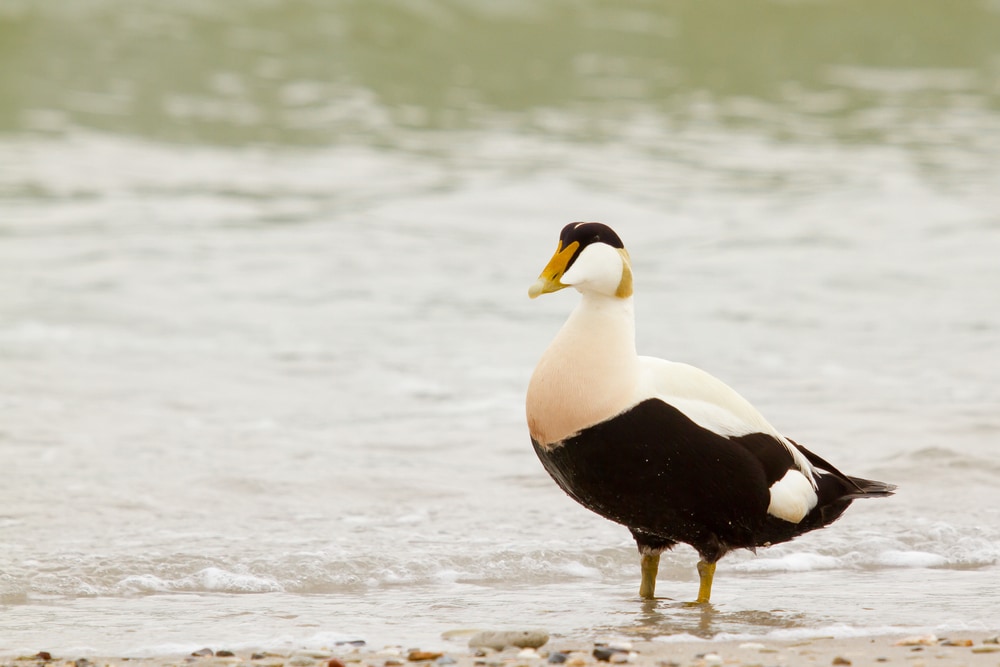
You can find elegant, 20 to 28 inches (51 – 71 cm) long Common Eider breeding along the eastern coast. These Maine shorebirds and the largest ducks in the Northern Hemisphere were almost eliminated in the 19th century. They have survived and tend to stay close to shore most of the summer.
Surf Scoter (Melanitta perspicillata)

The quickest way to recognize the dark Surf Scoter is by its colorful beak and bright white patches on the forehead. After the breeding period in Alaska and Canada, this 19 to 23.5 inches (48 – 60 cm) long duck spends winter along the Maine coast. You can notice their small flocks along with other sea ducks.
Snowy Owl (Bubo scandiacus)
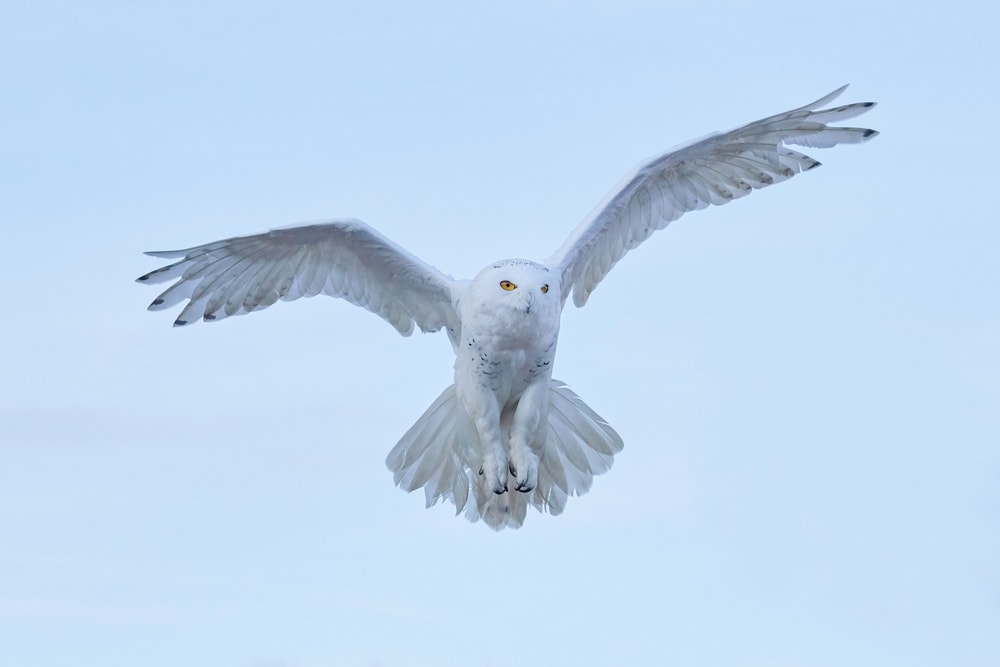
You need to be a lucky birder to see this particular, 21 to 25 inches (53 – 63.5 cm) long bird on Maine shores in winter since its white feathers represent excellent camouflage. This nomadic creature lives approximately ten years and occasionally comes to this state that offers its favorite food like sea ducks and rodents in abundance.
King Eider (Somateria spectabilis)
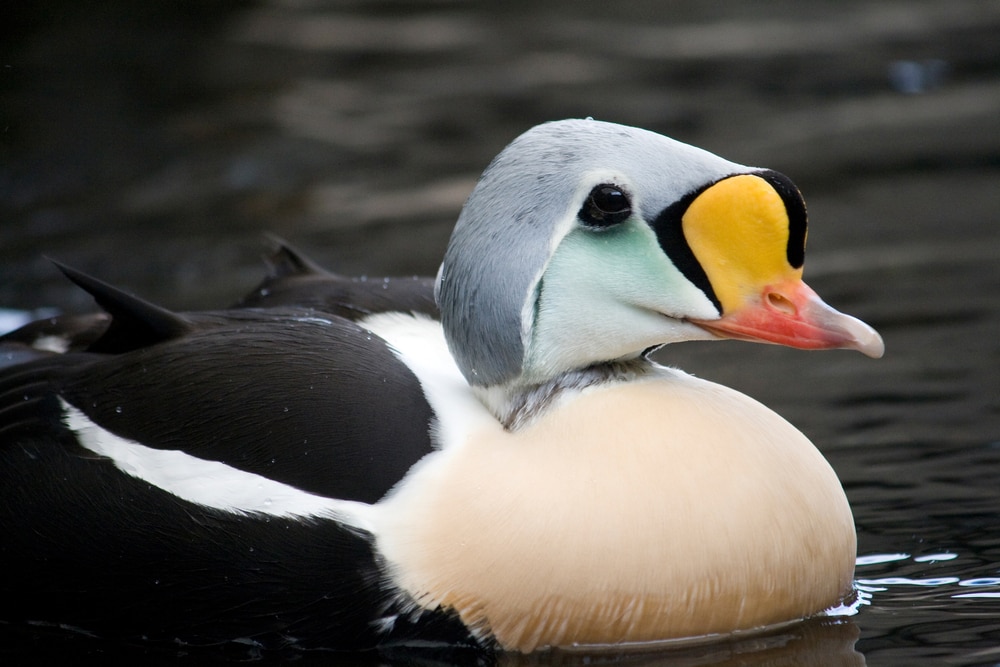
The 18.5 to 25 inches (47 – 63.5 cm) long King Eider male is one of the most colorful sea ducks seen at the Maine coast in winter. Unfortunately, you won’t have a chance to spot it very often. It is estimated that there are about 375,000 of these birds, but calculations can’t be precise due to their range’s remoteness.
Atlantic Puffin (Fratercula arctica)
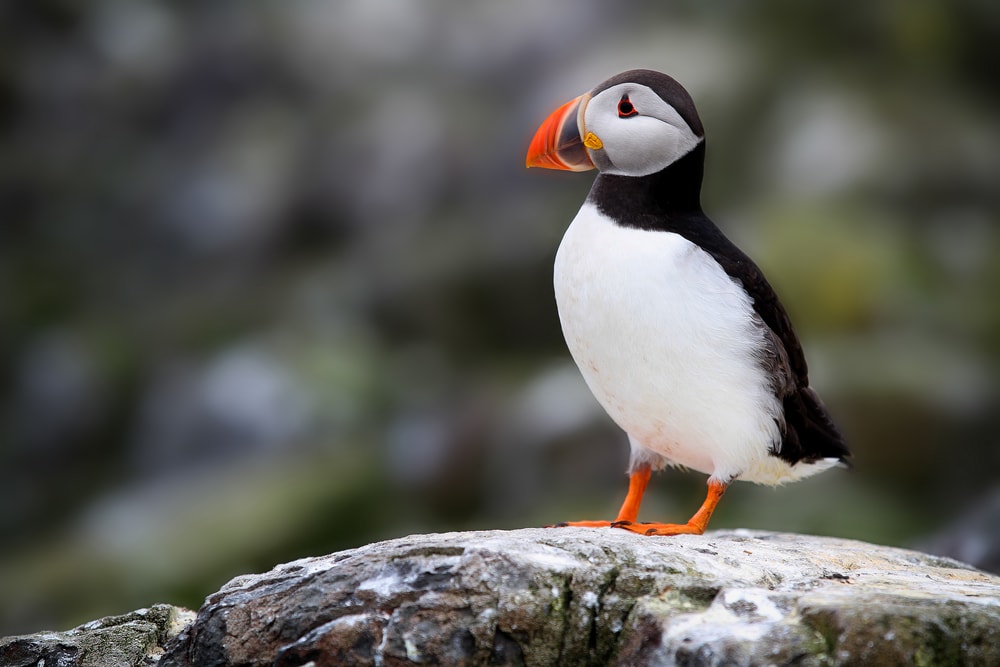
After it was almost eliminated in the 19th century, 10 inches (25.5 cm) long Atlantic Puffin is one of the most common birds in Maine now. You can’t see it breeding anywhere else in the US except on this state’s coastal islands. About 4,000 birds come here, and you can enjoy birding from a tour boat in June and July.
Gyrfalcon (Falco rusticolus)
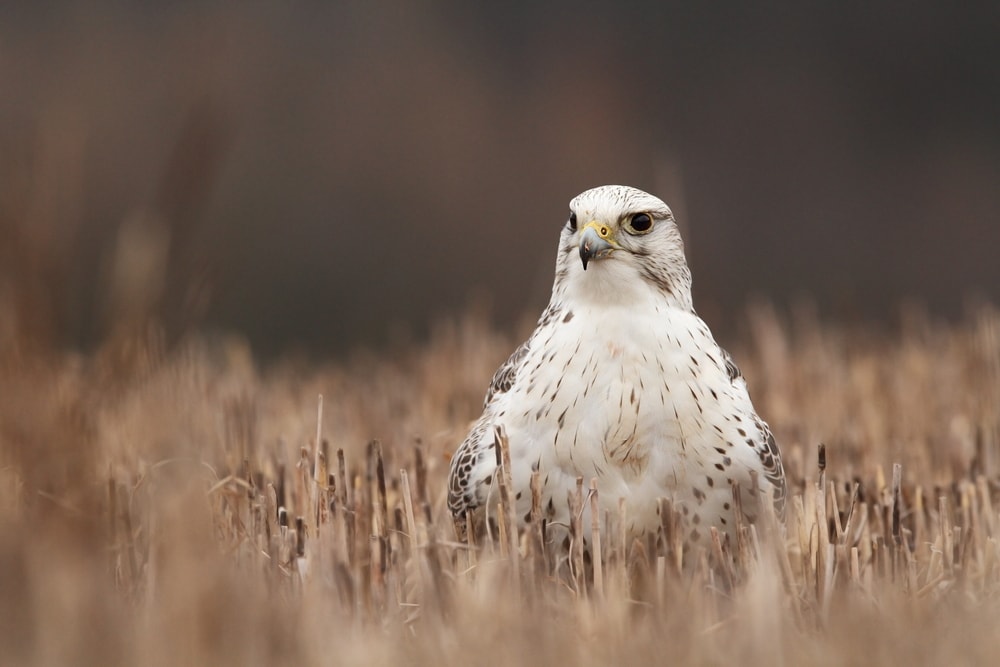
About 19 to 26 inches (48 – 66 cm) long Arctic Gyrfalcon is the largest falcon worldwide. You can see this efficient hunter in Maine occasionally in winter, usually along the coast when coming from Alaska and Canada after a breeding period. Since it is a polymorphic species, you can enjoy its feather color variations from white to dark.
Razorbill (Alca torda)
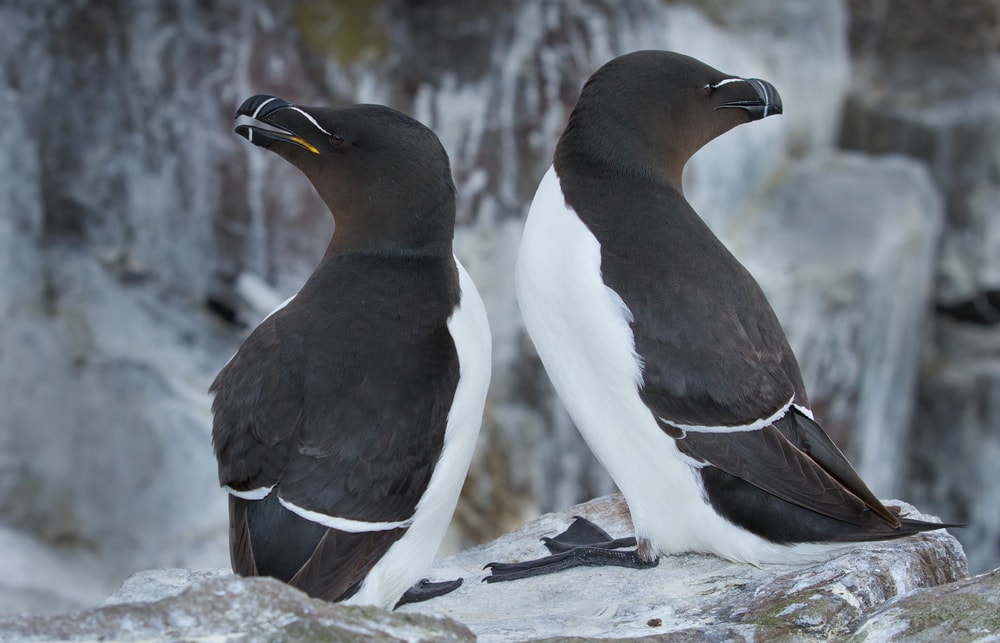
If you enjoy looking for small birds in Maine, 14 to17 inches (35.5 – 43) long Razorbill will be the right choice. You can see this colonial seabird along the shore. It is among the rarest breeding seabirds in the US, with about 300 recorded pairs nesting in this state.
Ruffed Grouse (Bonasa umbellus)
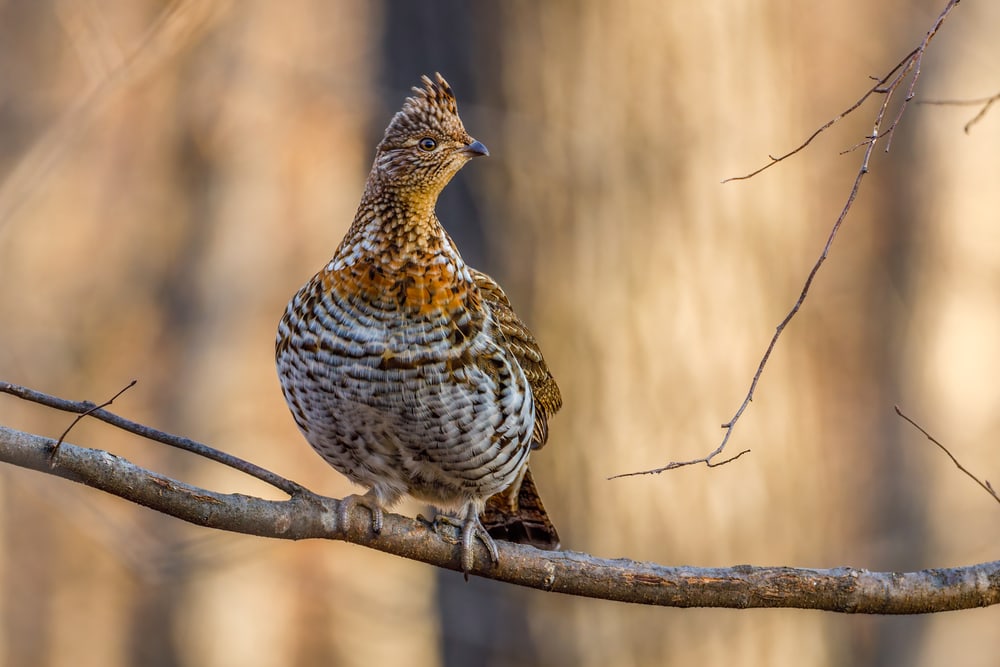
You can find 16 to 20 inches (40.5 – 51 cm) long Ruffed Grouse in deciduous and mixed woods of Maine year-round. The best period for birdwatching is spring, when males perform their love dance by strutting and fluffing up their dark neck ruffs. You can see these monomorphic birds only in the gray phase in this state.
Cape May Warbler (Dendroica tigrina)
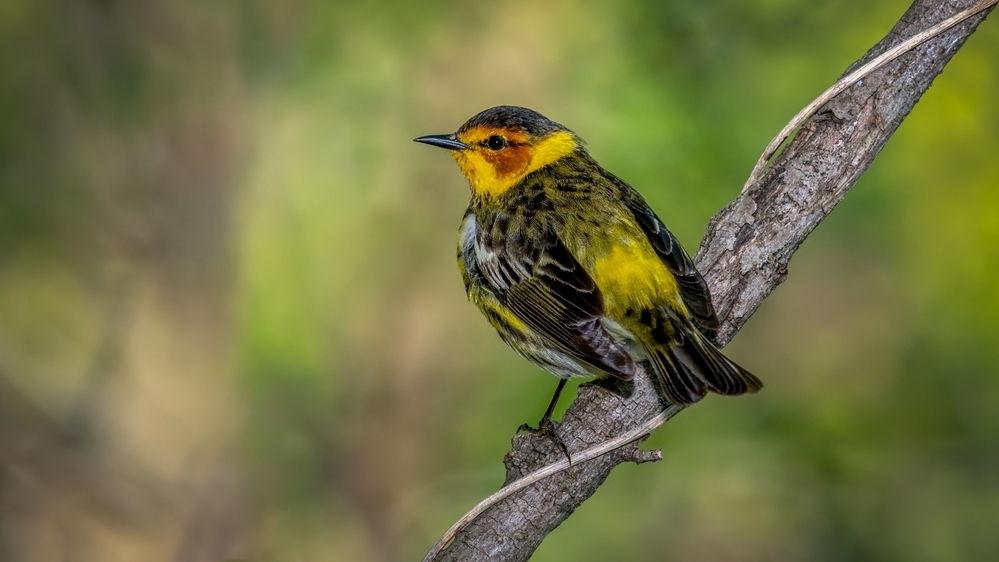
Cape May Warblers are probably the most boldly patterned yellow birds in Maine. This small, 5 inches (13 cm) long migratory species comes into the forest in the north part of the state to breed. It uses its unique semi-tubular and curled tongue to collect nectar while spending winters in the Caribbean.
White-winged Crossbill (Loxia leucoptera)
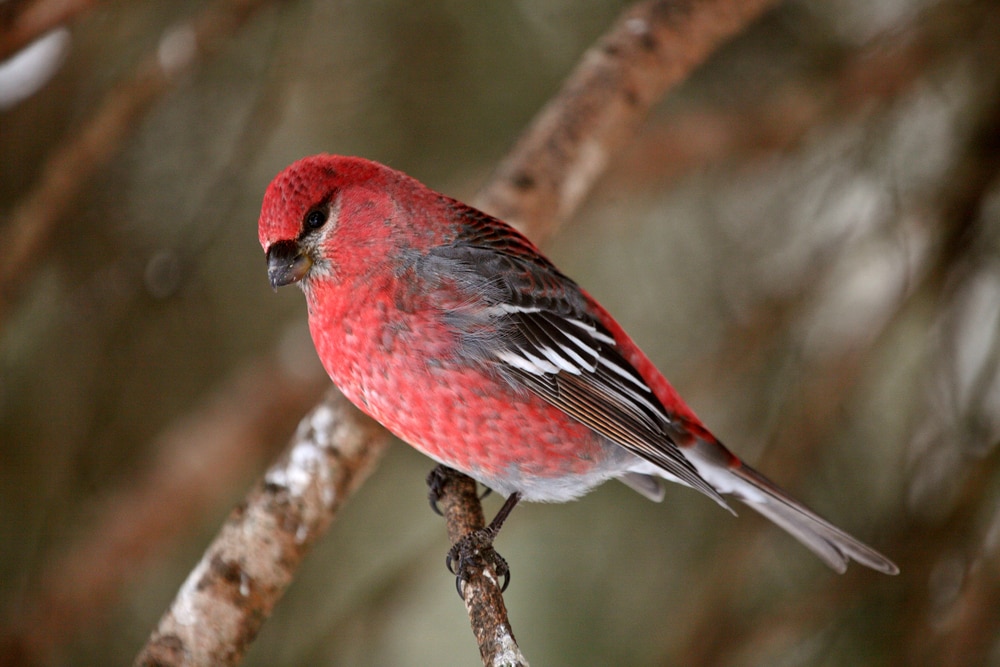
Approximately 6 to 6.5 inches (15 – 16.5 cm) long White-winged Crossbill is one of the most beautiful red birds in Maine. Its favorite habitat is spruce forests in this state, and this lovely creature spends the whole year there. Unfortunately, it doesn’t have a habit to visit feeders.
Common Birds of Maine
There is a list of the most common birds in Maine based on eBird recorded views data. You can see most of them in your feeders.
American Crow (Corvus brachyrhynchos)
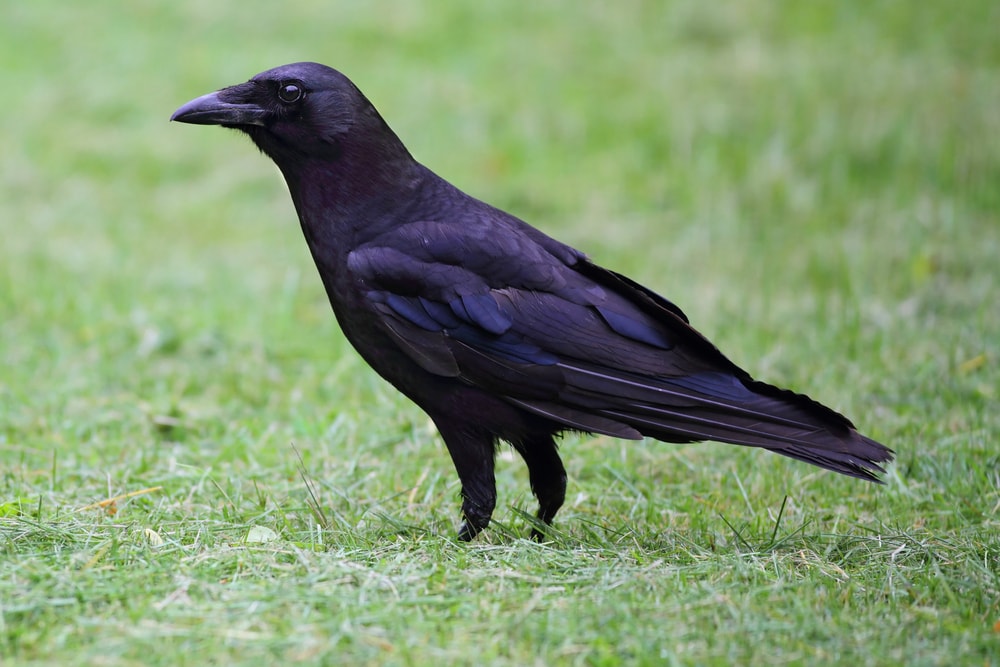
The 18 inches (46 cm) long American Crow is one of the typical black birds in Maine and is considered an intelligent bird species. Since it is a resident, you can see it year-round in the southern state region. These birds pair for life, highly appreciate family ties, and go hunting for food together.
Black-capped Chickadee (Poecile atricapillus)
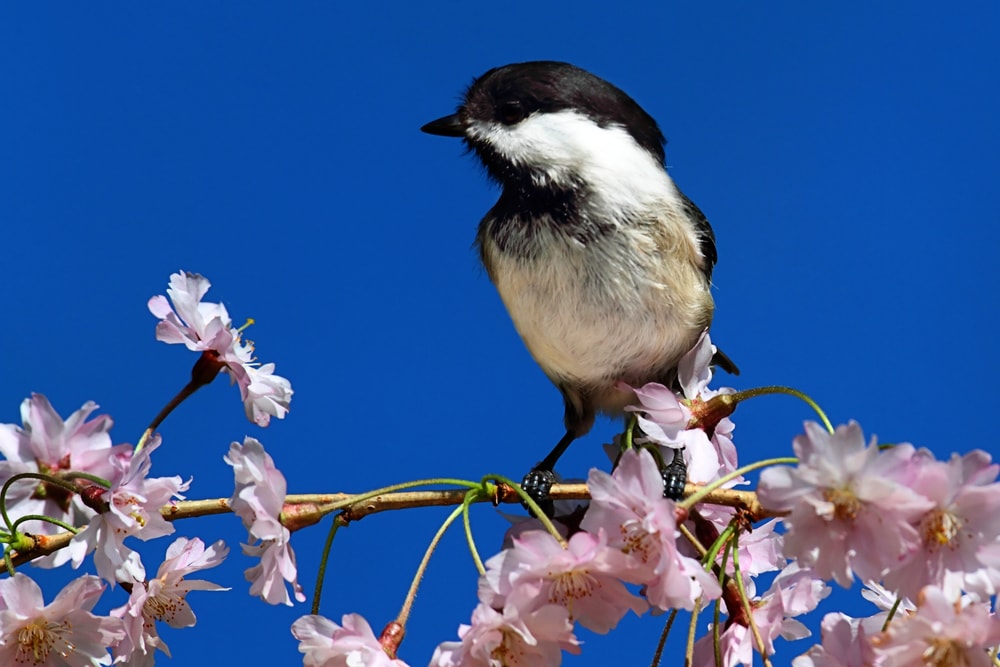
This active and hardy, 5 to 5.5 inches (13 – 14 cm) long species is a year-round bird of Maine resident. Since 1927, it is officially the state bird. Except in the woods, you can see it at backyard bird feeders in suburban areas. This beauty is famous for its unique and complex ‘chick-a-dee’ call.
American Goldfinch (Spinus tristis)
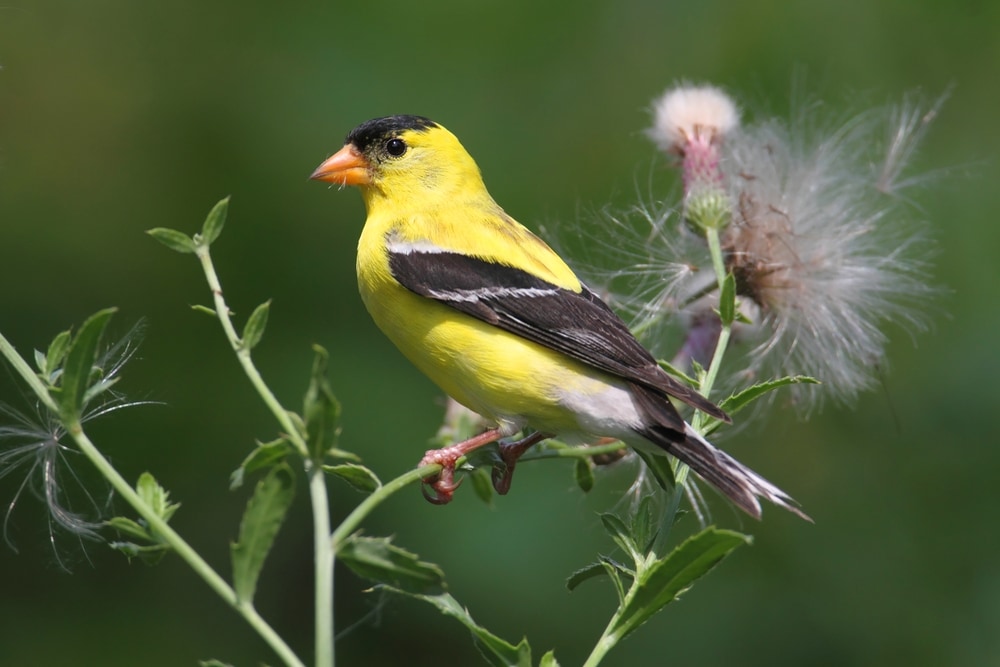
American Goldfinch is famous for changing color depending on the season, from bright yellow in summer to olive shade in winter. This beautiful, 4.5 to 5 inches (11.5 – 13 cm) long bird is a part of a large flock but becomes incredibly territorial during the breeding season. Once the female lays eggs, the aggressiveness disappears.
Herring Gull (Larus smithsonianus)
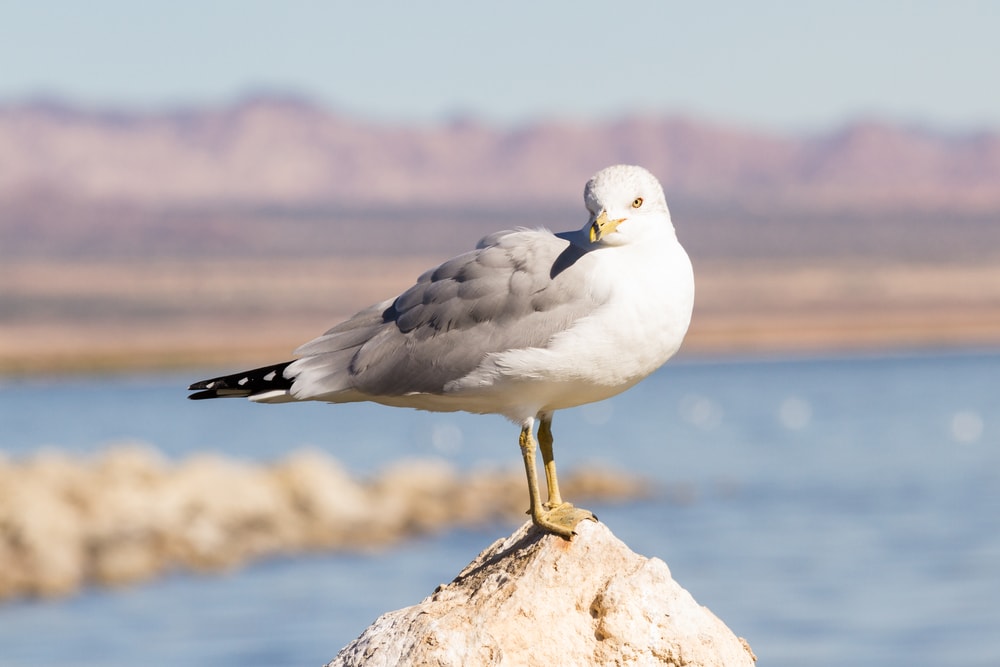
This 21.5 to 25.5 inches (55 – 65 cm) long gray-and-white Herring Gull with pink legs and an impressive wingspan of over 24 inches (61 cm) is the most familiar gull species in the US. Males feed their sweethearts during courtship. Another curiosity is the adult’s ability to use baits during fishing.
Blue Jay (Cyanocitta cristata)
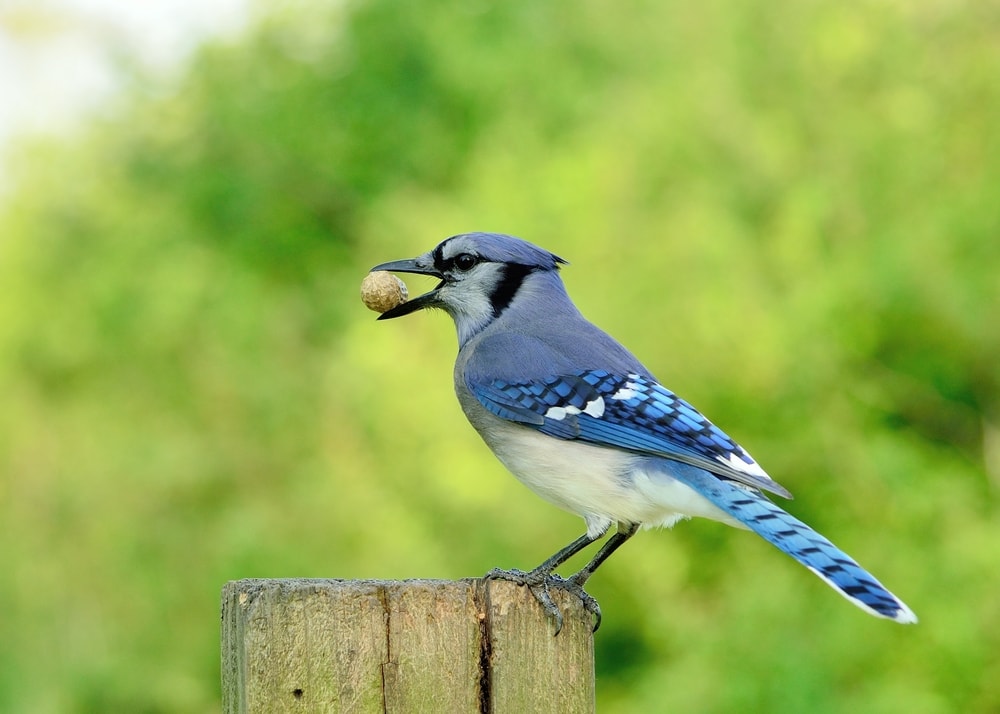
All four Blue Jay subspecies are native to the US. Northern Blue Jay is the largest and one of the backyard birds of Maine, highly adaptable to harsh winters. It can learn and successfully mimic human speech. Thanks to the wingspan of 18 inches (46 cm), it can fly up to 25 mph (40 km/h).
Song Sparrow (Melospiza melodia)
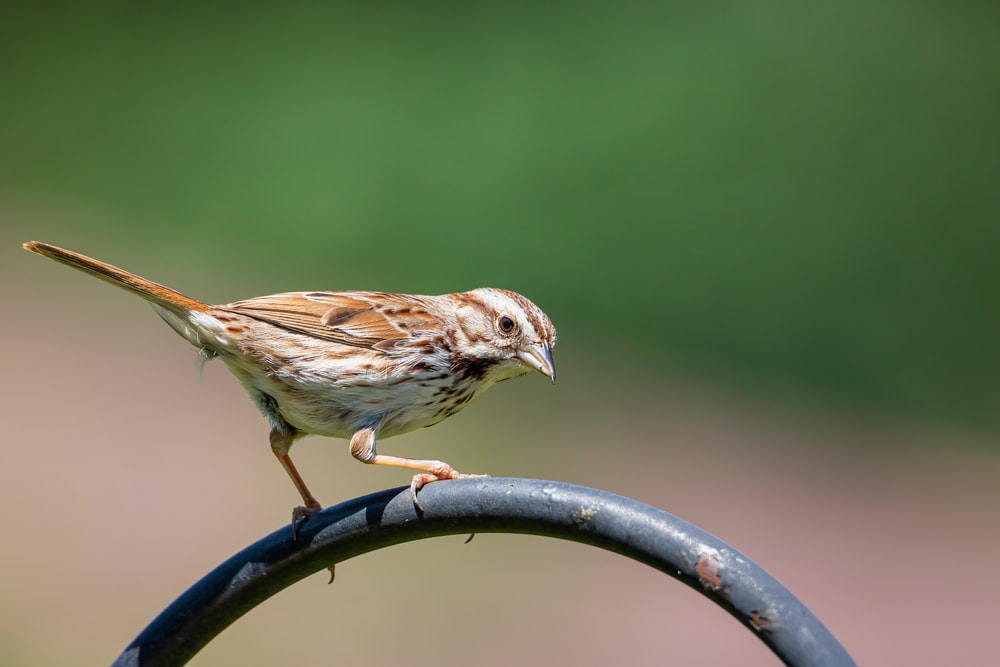
Approximately 4 to 7 inches (10 – 18 cm) long Song Sparrow is one of 28 documented species of New World sparrows and the most abundant American native bird species. After spending winters in South America, this tiny cutie arrives back in Maine in early spring. You will quickly find it by following its song.
Mourning Dove (Zenaida macroura)
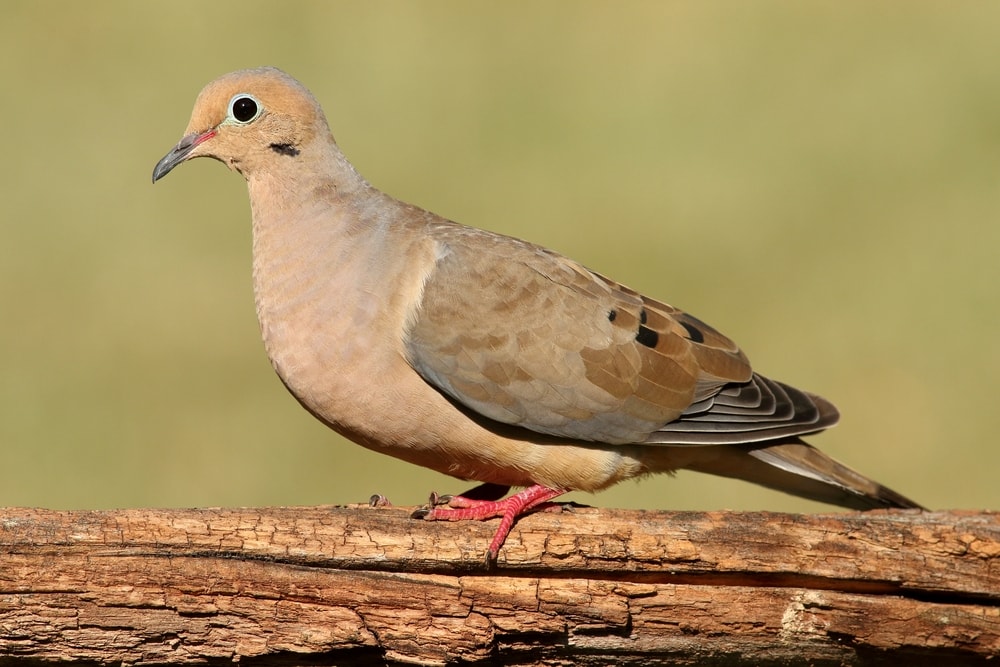
You can see Mourning Dove throughout the US, but it is more common in the south from September to March. It often flies over 1,000 miles (1,610 km) at a speed of 55 mph (88.5 km/h) to reach its wintering areas. Unlike most states, Maine doesn’t allow the hunting of these backyard birds.
American Robin (Turdus migratorius)
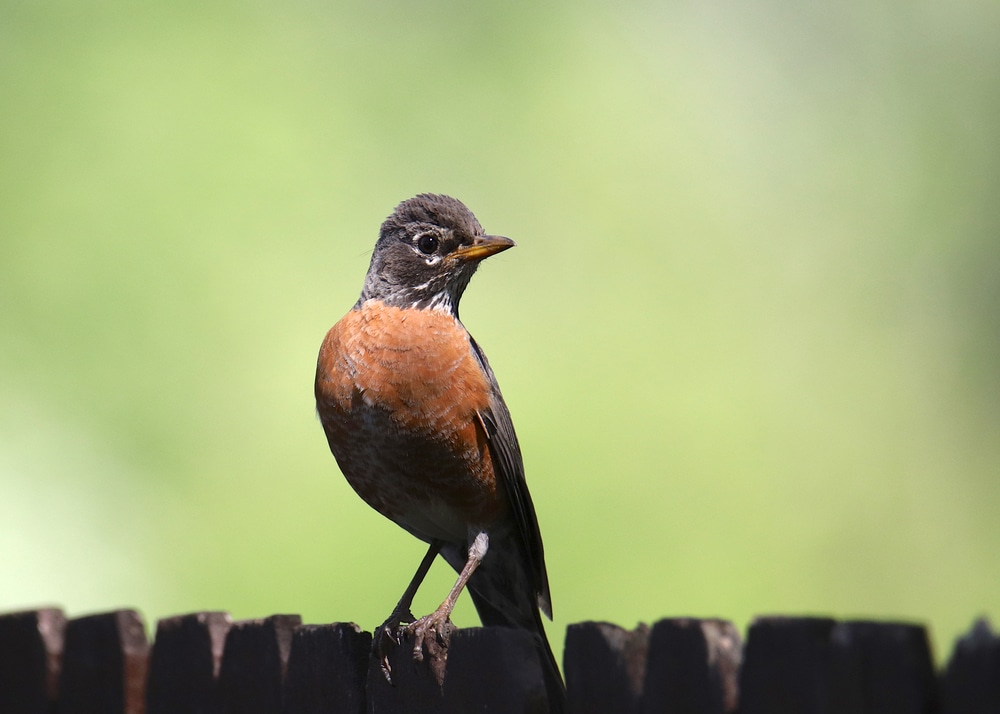
American Robin is a US native and widely distributed songbird in Maine that lays unusual, bright blue eggs. Approximately 10 to 11 inches (25.5 – 28 cm) long bird spends winters in this state. It is quite a territorial species that enjoys hopping equally throughout the lawn and city parks.
Northern Cardinal (Cardinalis cardinalis)
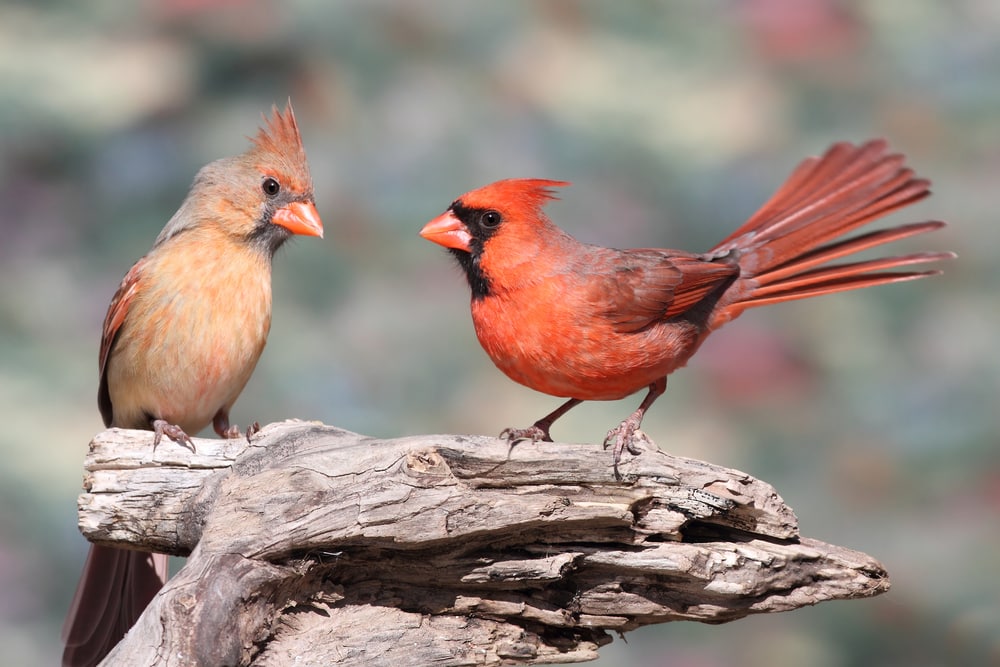
Northern Cardinal is a 7 to 9 inches (18 – 23 cm) long, red year-round resident songbird in Maine. It prefers living along woodland edges, and you can often see it showing up at bird feeders in winter. It is the first species designated as a state bird in the US.
Downy Woodpecker (Picoides pubescens)

Downy Woodpecker is the most common and smallest, about 5.5 inches (14 cm) long woodpecker in Maine. It is an excellent flyer with an average wingspan of 10 inches (25.5 cm), but it spends most of the time clinging to the tree trunks. This bird has a crucial role in insect pest control.
Maine Landscape and Birding Seasons
A bird-friendly landscape is one with a few crucial habitat elements, including plenty of food and water and adequate sites for nesting and protection from harsh weather. Since Maine can provide all that, it is an ideal habitat for year-round birding. It is divided into six regions, including:
- Interior and southern Maine, rich in forests, wetlands, and lakes ideal for Maine water birds watching.
- Northern Maine, a sparsely populated region, is a favorite area for breeding birds and Neotropical migrants.
- The climate in the Western mountains is harsh, but the most sought species live here.
- You can find wide bird diversity on the Southwest coast sand beaches, marshes, and saltmarsh estuaries.
- Midcoast includes island bays and rocky peninsulas attractive to numerous bird species, including vagrant migrants.
- Downeast is a region with a unique boreal character that offers the most opportunities for birding in Maine.
Birders can birdwatch in Maine during three different periods during the year. The spring birding season starts in April when migrants like ducks, finches, and hawks arrive in Southern Maine.
From May to mid-June is the summer season, when you can see 140 species in southern and 125 in eastern and central state parts. Hawks will be the first to migrate at the end of the season in September, followed by sea ducks. Species breeding in Canada comes to Maine in November.
Maine Birding Hotspots
Maine is rich in breathtaking bird hotspots when you can enjoy birding and photographing birds, but there is a list of the most popular ones.
Monhegan Island
The Monhegan Island is a small, 1.6 miles (2.6 km) long island located 11 miles (18 km) off the coast. You should visit it during spring and autumn when it is full of resident species and all the migrant birds of the eastern US. It is also famous for an impressive list of rare birds.
Biddeford Pool – East Point Sanctuary
Maine Audubon’s East Point Sanctuary is a well-known, 27 acre (11 hectares) large location in the south part of Saco Bay. It is considered the best spot for birdwatching in this state. You can see 260 different bird species from fall to spring, including waterfowl, shorebirds, and wading birds.
Stratton Island
Small Stratton Island, which hosts the most diverse water bird colony, is really something special. This place hosts a few endangered bird species, including herons and wading birds nesting among tall shrubs. There is also a tern colony numbering more than 120 Roseate Terns and 1,900 Common Terns pairs.
Rachel Carson NWR – Timber Point Trail
Located at the mouth of the Little River, Timber Point embraces forest, salt marsh, freshwater swamp, and rocky shoreline that are safe habitats for shorebirds, waterfowl, sparrows, raptors, and early migrants. Some birds you can see here are endangered species, including American Bald Eagle, Northern Harriers, and numerous hawks, ducks, and loons.
Fort Foster Park, Kittery
Fort Foster at Gerrish Island is the southernmost point of the Birding Trail in Maine. Birders enjoy spending time here because of a diverse, almost 100 acres (40.5 hectares) large habitat hosting 90 bird species, including seabirds, shorebirds, waterfowl, woodpeckers, sparrows, and owls. You can use a platform on the pier to watch migrating songbirds.
Scarborough Marsh-Eastern Rd.
Scarborough Marsh covers 3,100 acres (1,254.5 hectares), making it the largest salt marsh in Maine and a fantastic birding location year-round. You can enjoy diverse wading birds and waterfowl flocks here. Hawks regularly come to this unique place in winter, while you need to be lucky to see rare Snowy Owls.
Gilsland Farm Audubon Center
With 65 acres (26 hectares) of woodland, grassland, and salt marsh, the Gilsland Farm Audubon Center is a nesting spot for 250 bird species, including Bald Eagle, Wild Turkey, and Wood Duck. If you come in May, you will see numerous migrant songbirds. Be sure to visit The Pond Meadow, a home for wading birds.
Laudholm Farm
Laudholm Farm is a superb birding location year-round. You can rarely spot Brown Thrasher and Eastern Towhee elsewhere except along a 7 miles (11 km) long trail system. Shallow rock on the north is ideal for terns, gulls, migrating hawks, and occasional rare bird species. Since 1988, it is possible to attend public banding method demonstrations.
Biddeford Pool
Biddeford Pool, located along the Saco river bank, is the first permanent settlement in Maine since 1616 and an enclosed bay. It is one of the premier birding spots in this state, where you can see Common Eider, the largest ducks in the northern hemisphere, and Scoters flying above the water.
Seawall Beach, Phippsburg
Seawall Beach is a part of 600 acres (243 hectares) large Bates-Morse Mountain Conservation Area. The undisturbed nature of this habitat is an ideal home for both resident and migratory birds. You can see hawks in fall, ducks in winter, and wading birds in summer. Don’t miss Piping Plovers nesting along the beach and warblers hiding in the forest.
Maine Birds Field Guides
Modern times have made birdwatching more comfortable than ever. You need an Android and adequate iOS app to identify a particular species quickly. However, you will understand the necessity of a field guide when you should follow birds at places without the signal. It is inexpensive and full of crucial information about the local habitat.
Birds of Maine field guide

Stan Tekiela wrote an ultimate field guide that will help you identify any bird you see in Maine. He added numerous vital fact-filled information, including range maps for each species and useful compare features. This book includes detailed photos of 119 Maine bird species organized by color, making bird watching enjoyable.
Maine Birding Trail: The Official Guide to More Than 260 Accessible Sites

This official guide written by Bob Duchesne describes the best bird hot spots in Maine. With 260 Maine bird sightings explained in detail, you won’t have any problem finding the particular species you are looking for. The book lists all the birds you can find at each destination in a certain period.
Birds of Maine

A group of ornithologists wrote this comprehensive overview of birds and their conservation status in Maine to make birding a memorable event. Beautiful illustrations of vibrant birdlife and thoroughly researched Pine Tree State areas, where 464 recorded species live, make this guide helpful and unavoidable for every bird lover.
Maine Bird Checklist
Avibase is an essential guide for bird identification in Maine that embraces 479 species, including 22 introduced ones. You should check this handy bird checklist before starting birding, regardless of whether you live in this state or just plan to come here as a tourist. Download the full list here and enjoy birding whenever you want.
Download FREE Maine Bird Checklist PDF
Click here for an overview of Maine Birds
Specific Bird Species
Among many bird species in Maine, you can see ten endangered and ten threatened birds. About 50 birds in this state are Species of Special Concern, while four are extinct.
Hummingbirds in Maine
You can see Hummingbirds hovering in mid-air or flying backward in Maine. Four species have been recorded here, including the common Ruby-throated Hummingbird that stays in Maine from May to September and three rare or accidental species. One of them is Calliope Hummingbird, officially the smallest breeding bird in the US.
Hawks in Maine
When deciding to enjoy bird watching in Maine, you can find fifteen documented eagles, hawks, and kites. Sharp-shinned Hawk spends the only breeding season in Maine, while you can see magnificent Cooper’s Hawk only during the migration period. Don’t miss the relatively rare Red-shouldered Hawk spending spring and summer in this state.
Ducks in Maine
There are 150 waterfowl species worldwide. The Maine birding list contains 34 of them, including diving, dabbling, and sea ducks. All these birds migrate through this state, including 18 species spending winter here. Pay attention to the male Wood Duck, which green, burgundy, and purplish feathers make it the most beautiful duck in the US.
Bluebirds in Maine
The highly popular Eastern Bluebird comes to Maine to nest in summer and spends most of the time in open areas. It is considered the only bluebird in this state, although you can see four other species with bluish feathers. Thanks to the vibrant blue color, the males are among the most beautiful birds in the state.
Sparrows in Maine
You can find one Old World Sparrow and 32 New World Sparrow species, including 28 Passerellidae and 4 Calcariidae, in Maine. House Sparrow is a lovely, plump grayish or brownish creature non-native in the US. After deliberately introducing this bird to America in the 19th century, it has become one of the most common species.
Warblers in Maine
Most warblers are migratory birds in Maine, except Myrtle Yellow-Rumped Warbler, which sometimes spend winters in this state. You can enjoy 42 small colorful New World wood-warblers found in this state, including Tennessee Warbler. Despite the name, this olive-green and white beauty breeds in the central and northern marshes of Maine.
Finches in Maine
Finches are beautiful Maine songbirds, and you can find 15 species recorded here, including House Finch, that spends the whole year in northern Maine regions. Most birders enjoy seeing American Goldfinch, a small bird that changes feathers color from light yellow in summer to olive during the winter. It is a year-round Maine resident.
Herons in Maine
Herons are large birds in Maine that fly with their necks retracted and prefer living near the lakes, marshes, and rivers. There are 13 species recorded here, including the Great Blue Heron, the biggest in the US, that can take your breath away. It will be harder to find Little Blue Heron that only occasionally includes Maine in its habitat.
Falcons in Maine
You can spot these birds of prey everywhere in Maine. Look for four falcon types living here, including Peregrine Falcon, the creature speeding up to an unbelievable 200 mph (322 km/h) while diving for prey. Merlins are often unpredictable regarding their range, while the American Kestrel, the smallest falcon in Maine, is the most widespread common to see.
Owls in Maine
It is possible to notice 11 owls in Maine. This state is the rare part of the US where you can see Snowy Owls appearing here in winter. While you can find Barred, Great Horned, and Northern Saw-whet Owl year-round in Maine forests, Long-eared Owl lives here only in spring and summer during the breeding season.
FAQ
What kind of birds live in Maine?
You can find 464 documented bird species on the official Maine bird list, including 136 rare or accidental, five introduced and already established, and four finally extinct.
How many species of birds are there in Maine?
Many of 292 Maine wild birds occur statewide, but you need to check specific habitats during particular seasons when it comes to migrant species.
How do you find out what bird I saw?
You should install the Merlin Bird Photo ID if you have Android and take a picture, and this free iOS app will identify the bird immediately.
What is the biggest bird in Maine?
Albatrosses with the largest wingspans among birds are occasionally seen in Maine, but you can also find Bald Eagle, the largest, and Wild Turkey, the heaviest bird in this state.
Are there falcons in Maine?
Among other Maine birds of prey, you can often spot Peregrine falcon, American Kestrel, and Merlin, but also accidental species, such as Crested Caracara and Gyrfalcon.
What birds stay in Maine in the winter?
If you prefer watching Maine winter birds, you should look for American Crow, American Robin, Blue Jay, Cardinal, Chickadee, Cowbird, Goldfinch, Mourning Dove, and Purple Finch.
Are there pelicans in Maine?
You can see two species of these large water birds with a recognizable pouch under the beak in Maine, including Brown Pelican and American White Pelican.
Where are the puffins in Maine?
More than 4,000 puffins come to Mine to spend summer on the coast, mainly on the Eastern Egg Rock, Matinicus Rock, Seal Island, Petit Manan Island, and Machias Seal Island.

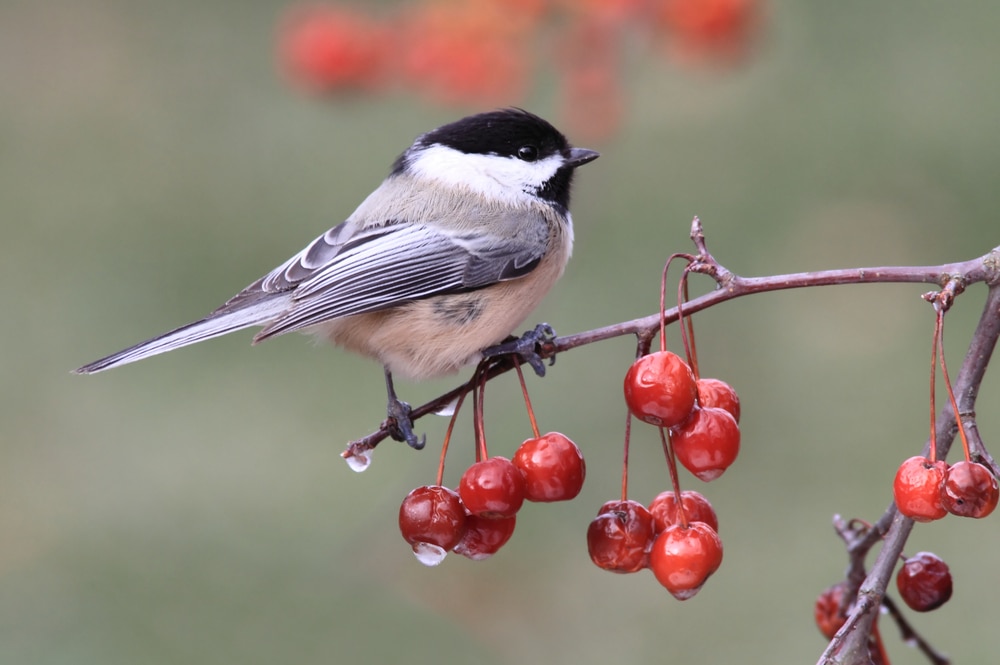
Thank you so much for your page.